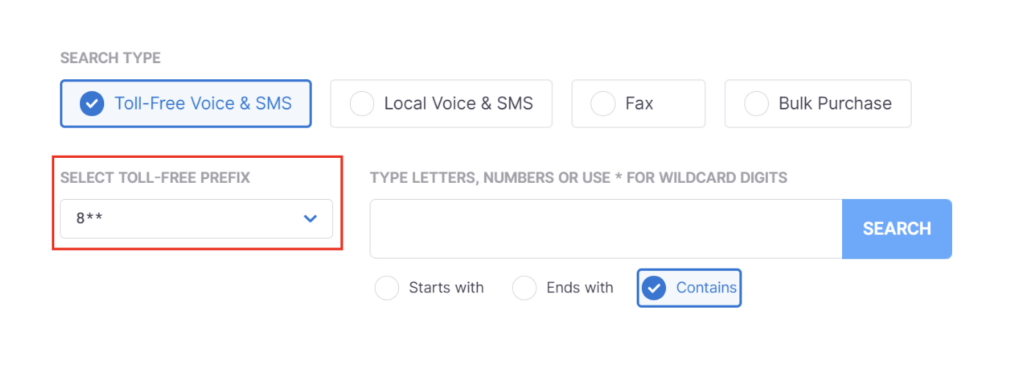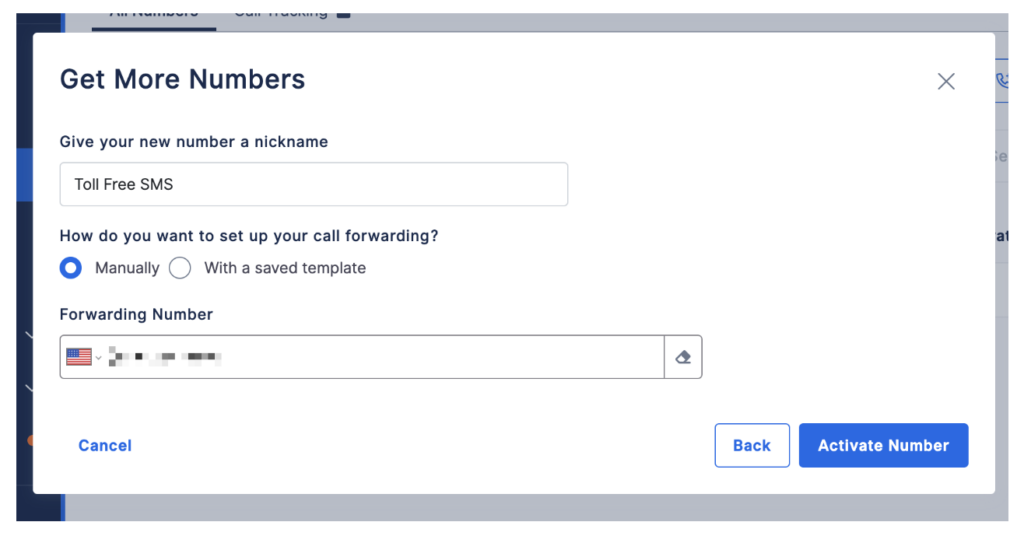An 800 number or a toll-free phone number lets customers easily reach your business through long-distance calling without incurring charges. To get one, start by choosing a service provider. Then pick a prefix (e.g., 800, 833, 888, or 855) and create an account.
This type of phone number enhances a small business’s reputation, positioning it as a large and credible entity. In addition, 800 numbers make a great marketing tool since there’s a high percentage of recall. Continue reading and learn how to get an 800 number, its benefits, as well as some alternatives if this isn’t the best option for your business needs.
Featured Partners
Step 1: Choose a service provider
There are several ways to select an 800 number provider, starting with a voice-over-internet protocol (VoIP) phone system. For those who don’t have phone service yet, a VoIP provider can help set up your 800 number by including this service as part of the monthly subscription or letting you purchase additional phone numbers.
Those who already have a phone subscription should inquire how to get an 800 phone number through their phone service provider and see if they can get a better price deal as an existing customer. Another option to consider is a standalone toll-free number provider that charges a flat, one-time fee to secure an 800 phone number. If you opt for a third-party provider, port the number to your existing phone service.
Toll-free number providers compared
Many cloud business phone providers offer VoIP phone features to make the most out of your subscription. Consider these VoIP providers to get started with an 800 number:
Toll-free Number Providers | Monthly Starting Price (per User) | Key Features | Learn More |
|---|---|---|---|
 | $23 |
| |
$30 |
| ||
 | $19.95 |
| |
 | $18 (Flat-rate) |
| |
 | $25 |
| |
 | $19 |
| |
Step 2: Pick a toll-free prefix
The next step to obtain an 800 number is to choose a toll-free prefix or the first three digits of the number. Some prefix examples are 800, 833, 844, 855, 866, 877, and 888—with 800 being the most popular.
To complete the second step, select a toll-free prefix. (Source: 800.com)
Sample popular toll-free numbers
To give you an idea and help you get creative, check out some of the most popular toll-free numbers in the US, along with their prefixes.
Company | Toll-free numbers with prefix |
|---|---|
Apple | 800-692-7753 |
FedEx | 800-463-3339 |
Best Buy | 888-237-8289 |
American Red Cross | 800-435-7669 |
Step 3: Set up your account
After subscribing to a service provider and choosing a toll-free prefix, the final step to getting an 800 number for your business is to create an account. Download the service provider’s mobile or desktop apps to register and log in.
Refer to the phone number settings to see the registered numbers for your account. If you need more guidance on how to obtain an 800 number, browse through the self-help resources on your service provider’s website.
Follow your provider’s instructions when setting up an 800 number and make sure to activate it. (Source: 800.com)
Who needs a toll-free number?
An 800 phone number is ideal for any business wanting to establish a national presence within the US or Canada. Instead of being tied to a specific area code, toll-free numbers help companies establish that they can serve customers nationwide. If you plan on expanding into new areas, 800 numbers boost brand credibility and client engagement in new markets.
Toll-free numbers can also track the effectiveness of marketing campaigns. Assigning 800 numbers to a website, billboard, or print ad lets you identify which marketing channel a call came from. Check out our video below to better understand how to get an 800 number for your business.

Benefits of having an 800 number
Toll-free services provide customers with a free and convenient way to contact businesses. They can boost a company’s marketing efforts, customer service, and brand credibility. Thus, knowing how to get a 1-800 number for your business offers long-term benefits.
- Enhances credibility: Customers associate toll-free numbers with large companies with a national audience. Thus, 800 numbers help establish a reputation for serving several customers.
- Offers mobility and portability: Toll-free numbers have no geographical restrictions, allowing you to answer business calls anywhere. They are set up in a way that makes it easy to transfer calls to an internet protocol (IP) phone or personal phone. Even if you change providers, you can take your number with you via number porting.
- Increases brand recognition: According to 800.com, toll-free vanity numbers use a neuroscience approach called memory chunking. A vanity number enables the brain to associate the words and digits with the brand, making the numbers difficult to forget. So if customers can remember your business phone number, you will be at the top of their minds, and it’s easy for them to reach you anytime.
- Makes tracking marketing campaigns easier: Attributing toll-free numbers to a specific marketing campaign allows you to measure its impact based on the number of incoming calls. According to toll-free number provider 800.com, vanity phone numbers increase call rates by as much as 84% for billboard and print ads, 58% for radio and television commercials, and 20% for online ads.
Alternatives to toll-free numbers
Other forms of virtual phone numbers—such as local, vanity, and international numbers—open countless opportunities to businesses with unique needs. Before picking a phone number, consider these popular options:
Other Types of Virtual Phone Numbers | Function | Top Phone Number Providers |
|---|---|---|
Local Numbers | A local phone number is typically included with a VoIP service. You choose a phone number with a local prefix from the region where your business is located. You can also expand to other places by selecting local phone numbers in states where you want to reach a new market. |
|
Vanity Numbers | Vanity phone numbers are custom phone numbers that typically spell out a memorable word or phrase. They work with a local area code or toll-free number prefixes (e.g., 212-NY-PIZZA and 1-800-FLOWERS). Most businesses choose vanity numbers to increase brand awareness and make customers easily remember them. |
|
International Numbers | If you want to expand your business overseas, international numbers help establish a local presence in other countries without opening an office. This encourages foreign clients to call your business without worrying about expensive international charges. |
|
Frequently Asked Questions (FAQs)
The cost of an 800 number varies across service providers, but most VoIP services offer a free 800 number with their monthly subscription plan, which typically costs $18 to $50 per user. For additional numbers, expect to pay from $5 to $10 a month. Standalone toll-free number providers charge $10 to $20 per user per month.
Calling an 800 number is free of charge if you’re calling in the US and Canada. However, there are fees associated with getting an 800 number, depending on the provider and the service plan you choose. Apart from the monthly subscription, 800 number providers may charge a one-time activation fee and per-minute costs for incoming calls.
Definitely! Toll-free numbers help organizations, particularly start-ups and small businesses, establish credibility with customers by giving them the option to reach out anytime at no charge.
Bottom Line
Getting a business phone number or an 800 number enhances your brand image and helps you connect with your audience better. It builds up a business’s reputation, enabling it to serve a vast client base by allowing customers to reach out to them easily and for free. Subscribe to a virtual phone system today to access a vast catalog of toll-free numbers and call management capabilities.




